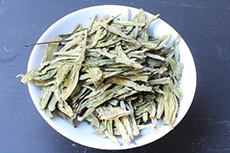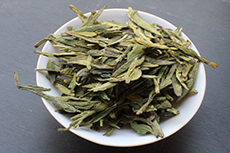.
Search results
Results 1 till 3 of a total of 3 (1 pages).
-
Blog Länggass-Tee
-
Bai Ya Long Jing
Baiya Longjing or Baicha Longjing has also been produced from a white-leafed tea plant; but it comes from Xinchang, and not Anxi. It is produced with leaves of the tea plant with the whitish leaves. Exceptional delicacy displaying aromas between An Ji Bai Cha and Long Jing Shi Feng. A beautiful example for the influence of the form on the taste.The producer, who is known in his town as a tea freak, as he is crazy for tea, owns vast tea gardens in the hills around Xinchang and produces a diversity of teas from diverse varietals in good quality.The tea is called Bai Cha, white tea, because the leaves are of a pale green, almost white, when they are plucked, as this tea plant has very little chlorophyll. However, it is produced in the manner of green tea. These tea plants with the whitish leaves had already been described during the Song-dynasty (960-1279), and were ever since thought to be a myth. At the end of the 20th century, however, a wild tea tree of this kind was (re-?)discovered. Teas from this tea varietal are very smooth and incredibly sweet in aroma. Because of the high degree of a certain amino acid in the tea plant these teas have a pronounced umami-taste. -
Long Jing Shi Feng
A genuine Longjing Shifeng tea of the highest of qualities, coming from the very best of sites. We buy this tea directly from the tea farmer in the village of Longjing.The step of firing (roasting) the leaves in a wok is done by machine, forming and drying in the wok is however done by hand in the traditional way: the leaves are not pressed too flatly, thus allowing for a full aroma, but as a result the tea does not look as regular and beautiful.
.









